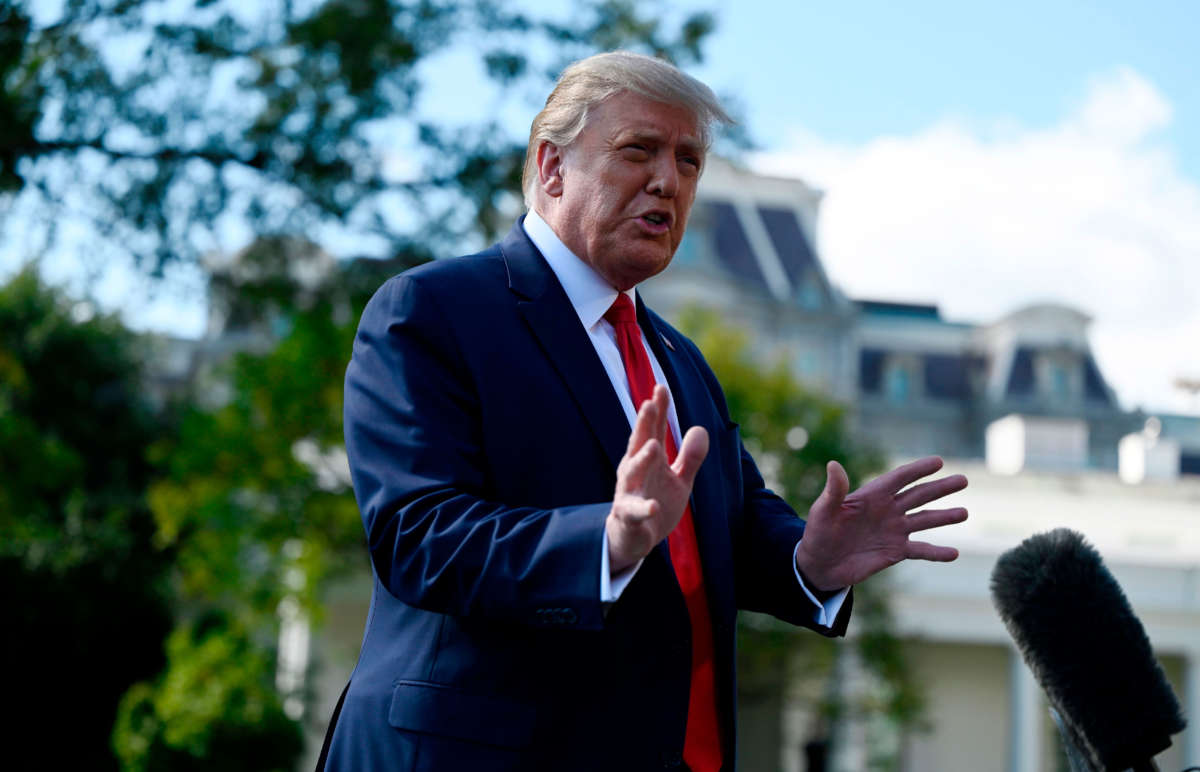President Trump is the largest individual driver of falsehoods and misinformation surrounding COVID-19, according to researchers at Cornell University, who recently analyzed 38 million articles about the coronavirus pandemic in English-language media from around the world.
Trump’s name appeared in articles that contained misleading information nearly 38 percent of the time, the researchers found. The president’s name was mentioned so often that he was given his own category within the study.
One other category — broadly labeled “misinformation/conspiracies” — accounted for 46.6 percent of misinformative articles. But because Trump was such a frequent purveyor of unsubstantiated claims on how to treat or even cure COVID-19, researchers concluded that it was reasonable to blame him for most of this misinformation, which they described as an “infodemic.”
“It is apparent from the data that mentions of President Trump within the context of COVID-19 misinformation comprise by far the largest single component of the infodemic,” they wrote, noting that mentions of Trump “comprised 37.9% of the overall infodemic, well ahead of ‘miracle cures,’ which comprised 26.4%.”
“However, a substantial proportion — possibly even the majority — of the ‘miracle cures’ topic was also driven by the president’s comments, so a substantial overlap can be expected between these topics,” the researchers added. “We conclude therefore that the President of the United States was likely the largest driver of the COVID-19 misinformation ‘infodemic.'”
Trump’s misleading statements on the coronavirus pandemic are infamous, including several examples of false narratives about its trajectory and unproven cures over the past several months. Trump, for example, suggested early on that warmer temperatures in the spring of 2020 would end the pandemic altogether, a notion that had no scientific basis (and which has obviously since been proven untrue). He also said, without any proof, that exposure to sunlight could help in the treatment of the virus.
The president has also pushed a number of other ineffective, unproven and sometimes deadly remedies for how those who contracted coronavirus could treat it. He constantly pushed the antimalarial drug hydroxychloroquine as a treatment, for instance, even after numerous studies found the drug had no effect in helping people and may have even resulted in higher mortality rates. Trump also suggested using disinfectants “by injection inside” the human body as a route for scientists to consider researching, which prompted disinfectant manufacturers to release several statements warning consumers not to use their products in that way.
Although the president was identified in the Cornell study as being the biggest culprit of misinformation when it came to coronavirus, researchers did not just fault him for misleading the public. Several media companies also played a role by acting like stenographers for world leaders.
“By choosing to uncritically report statements and remarks made by influential persons, without necessarily verifying or discounting the accuracy of those claims, [media professionals] risk unwittingly facilitating the dissemination of misinformation,” the paper said, noting also that fact-checking only accounted for 16.4 percent of articles that contained misleading content.
Our most important fundraising appeal of the year
December is the most critical time of year for Truthout, because our nonprofit news is funded almost entirely by individual donations from readers like you. So before you navigate away, we ask that you take just a second to support Truthout with a tax-deductible donation.
This year is a little different. We are up against a far-reaching, wide-scale attack on press freedom coming from the Trump administration. 2025 was a year of frightening censorship, news industry corporate consolidation, and worsening financial conditions for progressive nonprofits across the board.
We can only resist Trump’s agenda by cultivating a strong base of support. The right-wing mediasphere is funded comfortably by billionaire owners and venture capitalist philanthropists. At Truthout, we have you.
We’ve set an ambitious target for our year-end campaign — a goal of $250,000 to keep up our fight against authoritarianism in 2026. Please take a meaningful action in this fight: make a one-time or monthly donation to Truthout before December 31. If you have the means, please dig deep.
